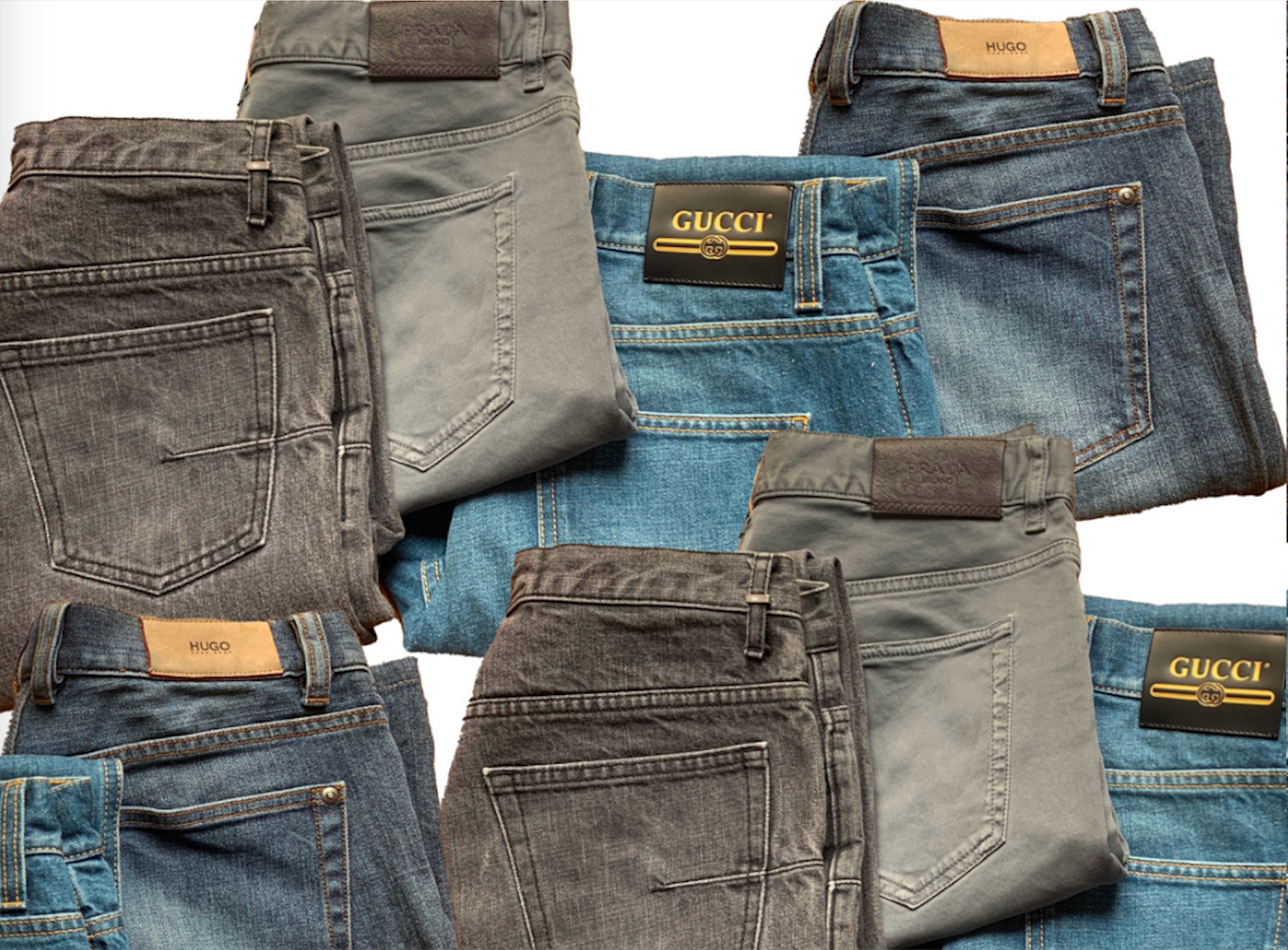Timeless but subject to fashion, durable but the most polluting product of the second most polluting industry in the world, a symbol of youth but adopted from 0 to 90 years old... in terms of textiles, is there a more paradoxical item than jeans, whether for the place they occupy in the hearts and wardrobes of men or in terms of carbon footprint?
To simplify the reading and choice of this garment that, statistically, you have a 99% chance of having in your closet, Beau Gustave has prepared some points of reference for you. History, selection criteria, and the diversity of cuts will be discussed.
You will also quickly understand why choosing your second-hand denim is particularly relevant and virtuous.
Check out our collection of jeans and denim jackets!
Fashions come and go, jeans remain
From Nîmes or Genoa, denim had to cross the Atlantic to become something. There is debate about the starting point, but the blue color is the result of using a dye made from the indigo plant, "blu du Genova," which would tend to support the Genoese origin of the fabric.
It is a specific weave which ensures its solidity: 2 threads are interwoven in twill and give it its woven appearance both diagonally and parallel.
Due to these characteristics, it was named "Blue Jean" by Jacob Davis and Levi Strauss in 1873.
The expansion of jeans is indeed closely linked to the Levi's Strauss brand, which in a way invented and marketed them... In 1851, a Mr. Levi Strauss left Austria for New York to join his brother's business. He quickly reached San Francisco on the West Coast. It was the time of the Gold Rush, and prospectors needed sturdy clothing that would withstand the harsh working conditions. Jacob Davis, a tailor from Reno, Nevada, used Levi Strauss and Co. fabrics. He had the idea of solving the problem of pocket strength by using rivets. Lacking the means to patent this very clever invention on his own, he partnered with Levi Strauss. Levi Strauss has never left the denim scene since.
From the 1930s onwards, jeans permeated other layers of American society, appearing as shorts, jackets and other leisure wear. During World War II, while American women adopted jeans to take over in factories, it was the GIs who brought them back to Europe.
The 1950s made jeans the symbol of rebellious youth (James Dean, Elvis Presley, Marlon Brando, etc.) and in a certain way, they would never abandon this role of sartorial assertion, nor of symbol of sexiness.
Ban on wearing jeans in certain high schools or public places, total denim look, jeans for feminist activists... When Yves Saint Laurent declared that his only regret was not having invented jeans , he summed up the place that they occupy in fashion and in our lives.
From the working class hero to the essential basic of the fashion influencer, in terms of clothing, jeans therefore reconcile social classes, and the most trendy with the most timeless.
Unsurprisingly, the price of vintage models has exploded, sometimes much more expensive than their contemporary versions. Want a pair of jeans? Click here !


From the working class to the catwalk
Sustainable but not very virtuous
While it is inherently designed to last and the passing of time should give it a beautiful patina, the ecological balance sheet of jeans is not great. 7 to 10,000 liters of water consumed, 65 to 70,000 kilometers traveled... The figures are even abysmal.
Its composition, the scale of its consumption, its production methods which make it an archetype of the globalized product…. It ticks many boxes of the excesses of fashion, in particular fast fashion.
This is primarily due to its main raw material. Cotton cultivation requires a lot of water, pesticides—organic cotton currently accounts for only 1% of consumption—and exploitative labor.
But jeans aren't just made of cotton. A touch of elastane in their fabric, metal rivets and zippers, polyester sewing thread, leather patches or other added materials... This has two consequences. First, they're difficult to recycle, and second, the globalization of their manufacturing doesn't improve their carbon footprint.
Between cotton fiber and finished jeans, the circuit crosses almost all continents: the Indian subcontinent, America and Africa for cotton production, the West and Japan for thread and canvas, the Maghreb and China for sewing, India, South East Asia and the Middle East for finishing.
Finally, even if things are improving, dyeing and especially washing treatments are still polluting and dangerous today (sandblasting in particular).
A cruel paradox of a product that sells rebellion and freedom but epitomizes the excesses of globalization. Jeans are very ambiguous, and we understand how second-hand is a good way to buy this essential with a clearer conscience.
History, cut, details... Le Beau Gustave does not claim to guarantee that you will solve the quest for the ideal pair of jeans, but has given you some keys.
Don't hesitate to come and continue the dialogue, in the showroom as well as on the Internet @lebeaugustave , as this piece is both essential in a man's wardrobe and relevant second-hand.
You can find our jeans collection on our website by clicking here !
Thanks to…. There are plenty of articles on jeans, but our main sources were The Goodgoods, La Redoute, the blog "commeuncamion," Asphalte, and Les Inrockuptibles. Thanks to them for everything we've learned, more or less, and we're very happy to share it.
Photo source ( https://designmag.fr/mode/jean-a-la-mode-1800-1984-476004.html ; https://www.numero.com/fr/mode-homme/selection-homme-denim-jean-automne-hiver-2020-2021-valentino-paul-smith-tom-ford-telfar-ferragamo-yproject#slide123425 )



